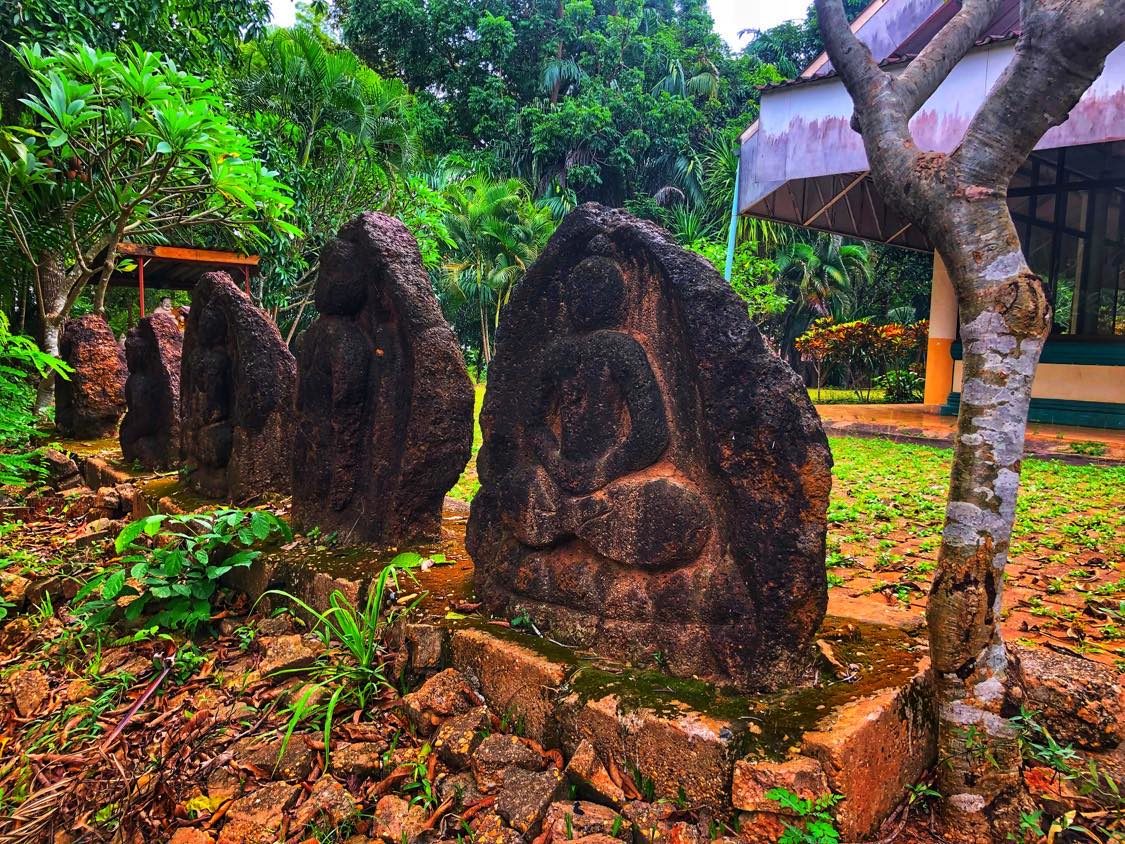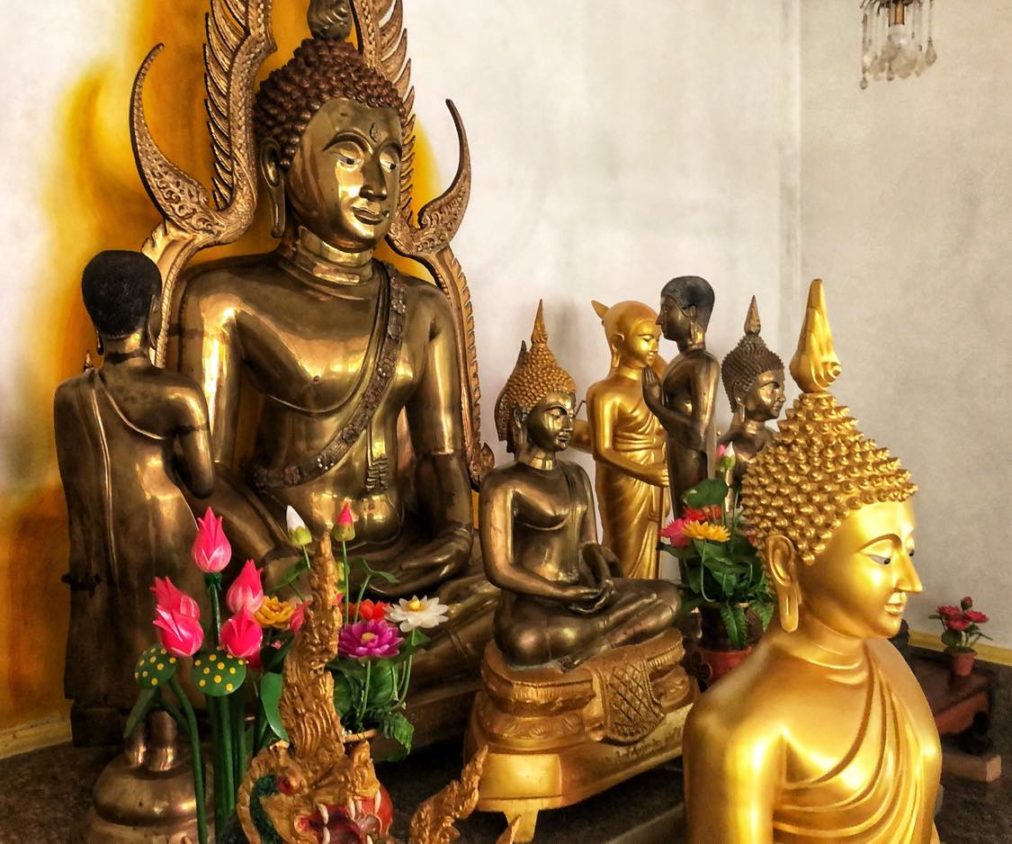Description
Wat Pa Nong Hoi (วัดป่าหนองหอย) is a Sakon Nakhon temple that translates to The Temple of the Shellfish. Its name is derived from the village where it is located, Ban Nong Hoi, which was build amidst a swamp that once was overflowing with different types of shellfish.
Wat Pa Nong Hoi is a little known temple, except among local villagers, but it appears to be a temple of historical significance. In front of the Viharn, there is a row of what appear to be ancient Khmer era sema stones, with the Buddha in various poses carved into the laterite. Sema stones are the boundary stones of an Ubosot, where monks are ordained. And Northeastern Thailand (Isaan) is known for having ancient sema stones of the Dvaravti period (7th-11th centuries).
It could be that these Wat Pa Nong Hoi sema stones are not ancient, and were created at a later date (to appear ancient). But they certainly look like authentic, ancient sema stones. And Sakon Nakhon is noted for being the cosmological axis of the old Northern Khmer empire, with ancient temple ruins, such as Phra That Phu Phek, Wat Prathat Dum, and Phra That Narai Cheng Weng. In addition, many other local temples have Khmer era relics on display, ones that were often discovered during excavation and building activities on the temple grounds.
Inside the Viharn at Wat Pa Nong Hoi are 3 paintings of the Life of the Buddha that are quite unique — one painting which you could imagine as an album cover of a '70s progressive rock band. Outside the Viharn is a sculpture of the fat Buddhist monk known as Phra Sangkachaim, who might be considered the patron saint of Asian farmers. There is also a pavilion with a large, standing Buddha in the teaching pose.
Wat Pa Nong Hoi is located about 25 minutes from Sakon Nakhon city and walking distance from the nearby temple Wat Bua Sri (The Temple of the Lotus), with its unique sculpture of Phra Mae Thorani.









